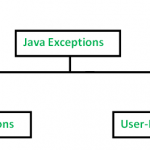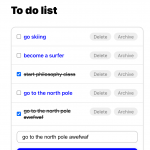在操作 DOM 方面,Vue 为我们提供了许多强大的功能。它简化了维护状态的工作,创建易于维护且使用有趣的 UI。Vue 做得很好的一件事是消除了对直接 DOM 操作的需要。不过,有时我们仍然需要自己操作或引用 DOM 元素。ref幸运的是,Vue 已经想到了这一点,并允许我们使用属性来做到这一点。
在 Vue 中引用 DOM 元素#
虽然当然可以.querySelector()在 Vue 文档上使用,但这不是最佳实践。如果我们想引用一个 DOM 元素,我们可以使用refVue 中的属性。
让我们看一个简单的例子。下面,我们的App.vue页面有一个输入,我们想在我们的一种方法中直接引用该输入:
<template>
<button id="myButton">Some Button</button>
</template>
<script>
export default {
mounted: function() {
}
}
</script>
Vue 可以将 DOM 元素的引用存储在一个名为$ref. 我们要做的第一件事是为我们想要在 Javascript 中引用的元素添加一个 ref 属性。属性的值ref将是它在$ref属性中的名称。
对于我来说,我称之为myButton:
<template>
<button id="myButton" ref="myButton"></button>
</template>
接下来,在我们的 Javascript 中,我们可以调用该引用,如下所示:
export default {
mounted: function() {
console.log(this.$ref.myButton);
}
这将返回 DOM 元素本身——因此您可以像操作任何 DOM 元素一样操作它。

引用子组件#
如果我们的按钮是一个组件,我们也可以使用相同的想法访问它。例如,假设我们有一个子组件,名为TestComponent. 我们可以ref直接在子组件中添加一个,如下图:
<template>
<button id="myButton" ref="myButton">Some Button</button>
<TestComponent ref="anotherButton" />
</template>
<script>
import TestComponent from '../components/TestComponent.vue';
export default {
components: {
TestComponent
},
mounted: function() {
// Console logs our "myButton"
console.log(this.$refs.myButton);
// Console logs "anotherButton"
console.log(this.$refs.anotherButton);
}
}
</script>
上面,我们添加ref到组件本身:
<TestComponent ref="anotherButton" />
这里的不同之处在于它不返回 DOM 元素本身 – 它而是为子组件返回一个对象。

引用子组件的 DOM 元素
由于我们在使用引用时获得了子组件的对象,因此如果我们想访问子组件本身内的 DOM 元素,我们必须使用$el– 来引用组件本身中的 DOM 元素。
// This is the child component reference
this.$refs.anotherButton
// This is the DOM element for the component
this.$refs.anotherButton.$el
引用子组件的方法
由于引用子组件是指整个组件,我们可以使用这个引用来引用它的方法。假设我们的子组件具有如下代码所示的 Javascript。
测试组件.vue
<script>
export default {
methods: {
someFunction: function() {
console.log('Hello');
}
}
}
</script>
在我们的 main,App.vue文件中,我们可以通过我们的引用来引用这个方法。例如:
<template>
<button id="myButton" ref="myButton">Some Button</button>
<TestComponent ref="anotherButton" />
</template>
<script>
import TestComponent from '../components/TestComponent.vue';
export default {
components: {
TestComponent
},
mounted: function() {
this.$refs.anotherButton.someFunction();
}
}
</script>
上面,由于我们添加了ref="anotherButton"对子组件的引用,我们可以通过该引用在 Javascript 中引用它。所有方法都可通过此参考获得:
this.$refs.anotherButton.someFunction();
将引用与 v-for 一起使用#
相同的概念适用于v-for. 如果ref在v-for元素上使用 a,则循环生成的每个元素v-for都将作为该引用中的数组返回。
例如,假设我们有以下代码:
<template>
<ul>
<li v-for="(item, index) in locations" :key="index" ref="myLocations">{{ item.name }}</li>
</ul>
</template>
<script>
export default {
data() {
return {
locations: [
{ name: 'London', date: '11/02/2022' },
{ name: 'Paris', date: '12/01/2022' },
{ name: 'Tokyo', date: '04/06/2021' }
]
}
},
mounted: function() {
let liElements = this.$refs.myLocations;
console.log(liElements);
}
}
</script>
由于我们已经为我们的元素添加了一个ref调用,我们现在可以通过. 由于它也是一个,将是一个数组。要获得第二个元素,我们将执行以下操作:myLocationslithis.$refs.myLocationv-formyLocationli
this.$refs.myLocations[1];
结论#
Vue 中的引用是访问 Vue 生成的 DOM 元素的强大方法。在 Vue 框架中工作时,它们也是最好的方法。我希望你喜欢这篇文章。更多 Vue 内容,可以在这里找到。




